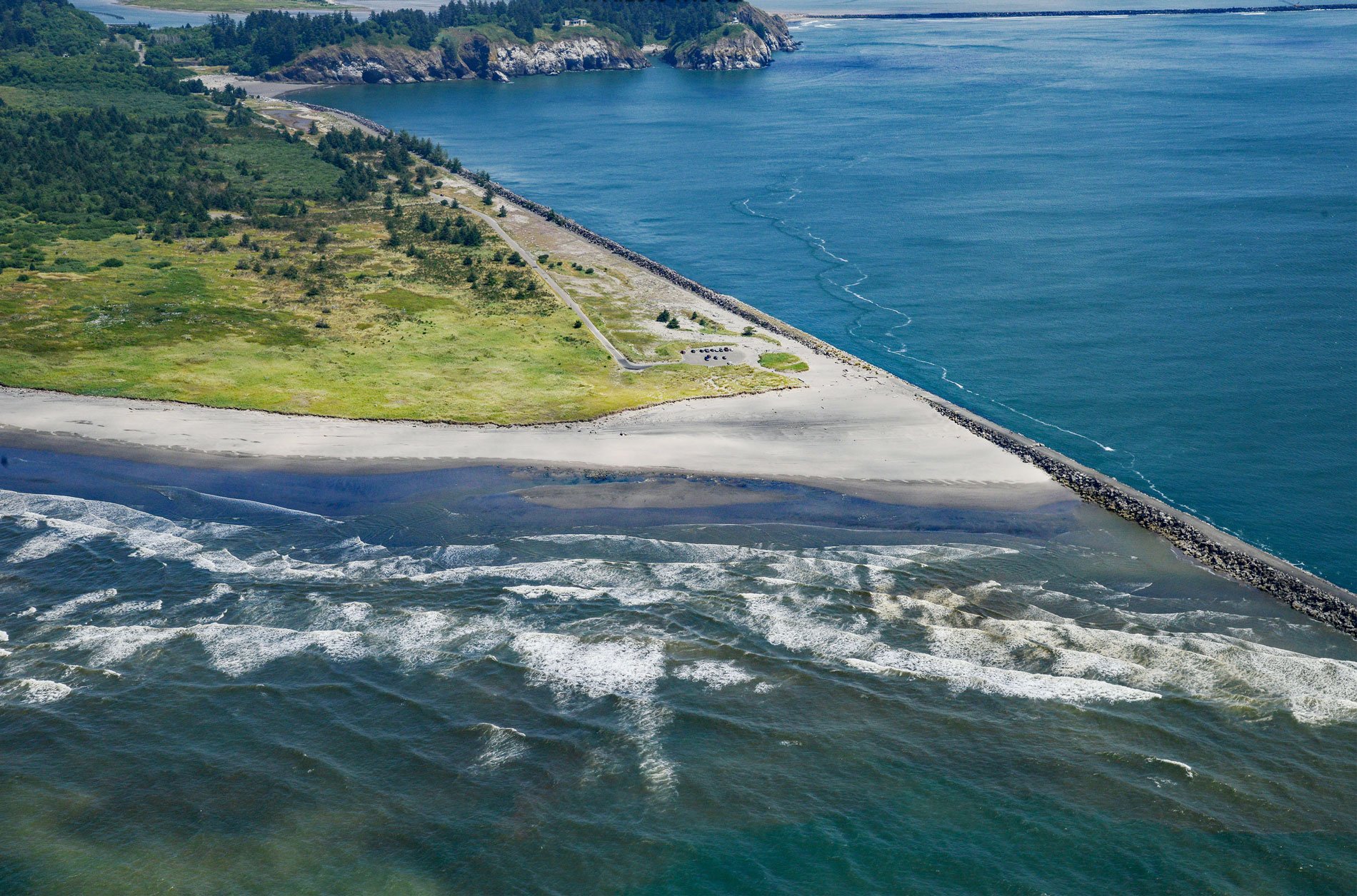Peacock Spit is the northern portion of a mostly submerged sand bar at the mouth of the Columbia River, about 12 miles (19 km) northwest of Astoria and 2.5 miles (4 km) south of Ilwaco, Washington. Peacock Spit was named after the USS Peacock, an exploration ship that sailed as part of the United States Exploring Expedition in 1838. USS Peacock ran aground and broke up on the Columbia Bar without loss of life in 1841. The Columbia River Bar is a system of bars and shoals spanning the mouth of the Columbia River between Washington State and Oregon. The system is about 3 miles (5 km) wide and 6 miles (10 km) long. The principal bars are extensions of the Clatsop Spit on the Oregon shore and the Peacock Spit on the Washington shore.
The bar develops where the river’s current dissipates and suspended sediments are deposited forming a shoal that creates standing waves under certain conditions of waves, winds, and currents. The Columbia River current varies from 4 to 7 knots (7-13 kph) westward, usually opposing the winds and ocean swells. This creates very dangerous conditions for vessels of all sizes. Sea conditions can change from calm to life-threatening in a few minutes with sudden changes in direction of wind and ocean swell. Since 1792, approximately 2,000 large ships have sunk in and around the Columbia Bar. A navigation channel is maintained through the bar with a width of 600 feet (180 m) and a depth of 43 feet (13 m).
Peacock is a Columbia River pilot boat now on display in Astoria, Oregon. Peacock was decommissioned and replaced by an integrated pilot boat/helicopter transportation system in 1999. Because of her historical significance, Peacock was given to the Columbia River Maritime Museum by the Columbia River Bar Pilots Association. Designed as the ultimate heavy weather vessel, Peacock crossed the Columbia River Bar more than 35,000 times during her 30-plus year career. The Pilot Boat Peacock was custom-built for the Columbia River Bar Pilots in Germany in 1964 and is based on a North Sea rescue boat design. Delivered for service in 1967, she is 90 feet (27 m) long, 33 feet (10 m) tall, and is self-righting. The stern of the boat is hinged to allow the launch and recovery of a 23-feet (7 m) long “daughter boat” used in heavy weather to make the actual transfer of the pilots between the ship and pilot boat. Peacock’s maximum speed was 26 miles per hour (41 kph). She carried a crew of three, plus up to 12 bar pilots. Read more here and here. Learn more about the Pilot Boat Peacock here. Explore more of Peacock Spit and the mouth of the Columbia River here:

